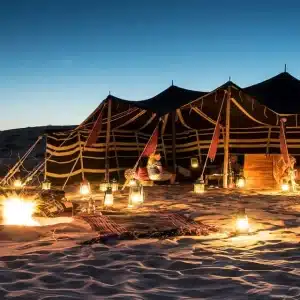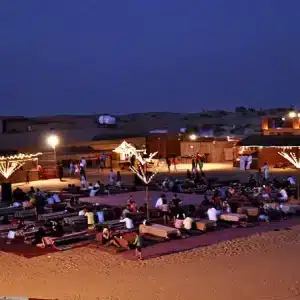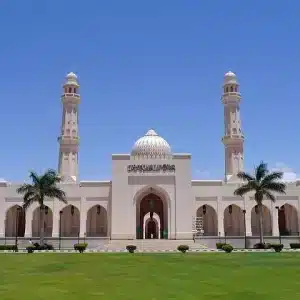Top 15 Authentic Salalah Cultural Tours That Reveal Oman’s Hidden Soul

Authentic Salalah cultural tours
Tucked into Oman’s southern Dhofar province, Salalah isn’t just a nature lover’s dream—it’s a cradle of culture. Authentic Salalah cultural tours go beyond landscapes and waterfalls, diving deep into millennia-old trade routes, tribal heritage, spiritual legends, and traditions that still pulse through modern life. This lush city, once a key player in the ancient frankincense trade, offers a living museum where every souq, stone ruin, and storytelling elder enriches your journey.
From archaeological parks to bustling markets, Salalah’s cultural experiences connect you to the very soul of Oman—and here’s your ultimate guide to exploring it all.
Why Salalah is a Cultural Gem of Oman
Salalah’s unique positioning—both geographically and historically—makes it a cultural anomaly in the Gulf. It’s the birthplace of the frankincense trade, the backdrop for biblical legends, and the homeland of unique Dhofari tribes. What sets Salalah apart in the cultural landscape is not just what you see, but what you feel. Traditions aren’t curated here—they’re lived.
The architecture, music, textiles, and even cuisine carry whispers of African, Yemeni, and Bedouin influences. The result? A tapestry of culture that’s wildly distinct from northern Oman.

From Ancient Trade Routes to Modern Traditions
Salalah sits at the end of the famed Incense Route, once a bustling trade network connecting Arabia with Egypt, India, and Rome. Frankincense from Dhofar was more valuable than gold. Cultural tours often start by tracing this very route—starting in Sumhuram, winding through Al Baleed, and ending at the ports of Khor Rori.
But the culture isn’t stuck in the past. Today, it thrives in festivals, souqs, music, and community life.
Al Baleed Archaeological Park and Museum Tour
This UNESCO-listed park is the heart of Authentic Salalah cultural tours. Walk among ancient city ruins where trade boats once docked. Then step into the adjacent Museum of the Frankincense Land, which offers:
Ancient maps
Trade artifacts
Maritime exhibits
Interactive cultural displays
A tour here brings Oman’s history alive for adults and kids alike.
Sumhuram Ruins and Khor Rori Exploration
South of Salalah, explore the legendary ruins of Sumhuram, said to be linked with the Queen of Sheba. Overlooking the estuary of Khor Rori, this once-thriving port city gives you panoramic views and poignant reminders of Salalah’s global influence centuries ago.
Guides often include oral history and archaeological insights.
Visit to the Museum of the Frankincense Land
Located within Al Baleed, this museum provides a detailed narrative on:
Dhofar’s maritime power
Omani shipbuilding traditions
The sacred and economic role of frankincense
Regional archaeological finds
It’s the cultural backbone of many guided tours.
Guided Walks Through Haffa Souq
No Salalah cultural tour is complete without wandering Haffa Souq, where the scent of frankincense hangs thick in the air. Here, you can:
Shop for traditional khanjars (curved daggers)
Watch silver artisans at work
Buy Omani incense, perfumes, and spices
Interact with friendly vendors happy to share stories
This experience is as sensory as it is cultural.
Mirbat Heritage Village Tour
Drive east of Salalah to the sleepy coastal town of Mirbat, once a hub for horse trade and port commerce. Walk through:
Mirbat Fort (partially restored)
Abandoned merchant houses with coral-stone walls
The eerie, sand-swept graveyards of past sultans and scholars
It’s a real-world history lesson—with barely a tourist in sight.
Sultan Qaboos Mosque in Salalah
As one of Oman’s most beautiful mosques, this architectural marvel invites admiration. On cultural tours, you’ll learn about:
Islamic art and Omani mosque architecture
Prayer traditions and spiritual customs
Role of religion in Dhofari society
Non-Muslim visitors are welcome during certain hours (modest dress required).
Prophet Ayoub’s Tomb and Pilgrimage Trail
Visit the resting place of Prophet Job (Ayoub), revered in Islam, Christianity, and Judaism. A cultural tour here includes:
The hilltop tomb shrine
The sacred footprint rock
Pilgrimage rituals during Eid
Legends told by local caretakers
The drive is scenic, and the site offers spiritual serenity and insight.
Tree Groves, Trade Ports, and Souq Scents
Frankincense Trail tours lead you to:
Boswellia sacra trees in Wadi Dawkah
Historic export points in Sumhuram
Souqs that still trade the resin today
Distillation workshops for perfumes and incense
Smell, touch, and even taste the sacred tree that made Salalah famous worldwide.
Bedouin Culture and Tribal Heritage
Meet the people who’ve lived in these mountains and deserts for generations. On a cultural immersion tour, you might:
Visit Bedouin tents
Share traditional qahwa (coffee) and dates
Hear stories passed down orally
Learn about tribal laws and dress
It’s a deeply human part of the journey.
Local Crafts, Pottery, and Weaving Demonstrations
In villages around Salalah, cultural tours often include stops to see:
Palm-leaf weaving
Clay pottery shaped by hand
Colorful wool textiles dyed naturally
Traditional jewelry making
Buying crafts here supports local artisans and keeps traditions alive.
Khareef Festival and Folk Traditions
Every monsoon, Salalah erupts with celebration during the Khareef Festival. Tours during this time offer:
Access to cultural tents with music and dance
Henna art for women and girls
Traditional food stalls
Camel beauty contests
Children’s games rooted in heritage
The city becomes a living, breathing museum.
Do’s and Don’ts During Cultural Tours
Do:
Dress modestly (cover shoulders and knees)
Greet people with the right hand
Show respect in mosques and homes
Ask before taking photos of people
Don’t:
Enter private areas uninvited
Criticize traditions or religious practices
Display excessive public affection
Following etiquette makes cultural exchange more authentic and respectful.
Traditional Meals, Coffee, and Dates
Taste is a cultural gateway. Many Salalah cultural tours include:
Omani shuwa (slow-cooked lamb)
Harees (wheat porridge)
Samak mashwi (grilled fish)
Fresh juices and frankincense tea
Meals are often served on the floor over a shared mat—symbolizing community.
Learning Through Local Narratives
Many local guides are storytellers. Their narratives give voice to:
Oral history of tribes
Myths of spirits (jinn) and miraculous springs
Maritime adventures of Omani sailors
Ancient battles and modern pride
Bring a journal—these aren’t stories you’ll find in guidebooks.
Forts, Mosques, and Merchant Houses
Architecture reflects culture. In Salalah and surrounding towns, tours take you to:
Sand-colored forts with Omani battlements
Coral stone houses of coastal traders
Century-old mosques with Dhofari flair
Government palaces from colonial and sultanate times
Every wall has a tale to tell.
Dhofari Drums and Traditional Performances
Some Salalah cultural tours include or recommend:
Live performances of razhah (sword dance)
Dhofari drumming circles
Shairi (poetic call-and-response singing)
Bedouin wedding traditions
These performances connect travelers directly to community heritage.
Capturing the Soul of Salalah
Photographers will love cultural tours for their:
Vibrant souq colors
Weathered textures of old forts
Portraits of people in traditional attire
Sacred moments in quiet shrines
Always ask before photographing locals, especially women.
Child-Friendly and Educational Options
Traveling with kids? Salalah cultural tours adapt with:
Interactive museum visits
Dress-up activities at cultural centers
Short attention-span walking routes
Food tastings and camel visits
Learning has never been more fun.
Sustainable and Ethical Tourism in Dhofar
Choose cultural tours that:
Employ local guides
Support artisan families
Avoid exploitation of communities
Practice low-impact travel
Salalah Tours is known for its community-integrated experiences.
Which Option Is Right for You?
| Tour Type | Pros | Best For |
|---|---|---|
| Guided | Expert info, logistics handled | First-time visitors |
| Self-Guided | Flexible, budget-friendly | Independent travelers |
| Private | Customized, private access | Couples, families |
| Group | Social, cost-effective | Solo travelers |
Souvenirs With a Story
Skip the fridge magnets. On cultural tours, you can buy:
Hand-poured frankincense
Locally woven baskets
Traditional Omani dresses
Miniature khanjars
Perfumes infused with desert roses
Each item tells a tale and supports a local dream.
When to Plan Your Cultural Trip
Khareef (Jul–Sept): Cultural events, cool weather
Fall (Oct–Dec): Quiet, great for museums and walking tours
Winter (Jan–Mar): Sunny and social season
Avoid: Late April–June (hot and dry)
Trusted Guides and Local Experts
Top-rated operators include:
Salalah Tours – Custom cultural experiences
Frankincense Route Guides – Archaeological focus
Oman Heritage Walks – Walking and storytelling tours
Viator and GetYourGuide Salalah – Bookable bundles
FAQs About Salalah Cultural Tours
Are cultural tours suitable for kids?
Yes—most are tailored with short walks, stories, and food tastings.
Do I need to book in advance?
For private or festival tours, yes. Museums and souqs can be visited anytime.
Is it respectful to visit mosques as a non-Muslim?
Yes, during visitor hours. Dress modestly and follow signs.
Are guides fluent in English?
Most licensed guides are fluent in English and Arabic.
Can I combine cultural and nature tours?
Absolutely—many packages offer a mix.
Conclusion: Why Salalah Cultural Tours Are a Must for Every Visitor
Beyond its scenic beauty, Salalah’s soul lives in its people, traditions, and stories. Authentic Salalah cultural tours offer travelers a chance to go deeper—to learn, connect, and carry home more than just photos. Whether you’re tracing frankincense trails, sharing coffee with a Bedouin family, or walking through 1,000-year-old ruins, every step enriches your understanding of Oman’s cultural heartbeat.
So don’t just pass through—immerse, engage, and experience the living history that makes Salalah unforgettable.





Comment (0)